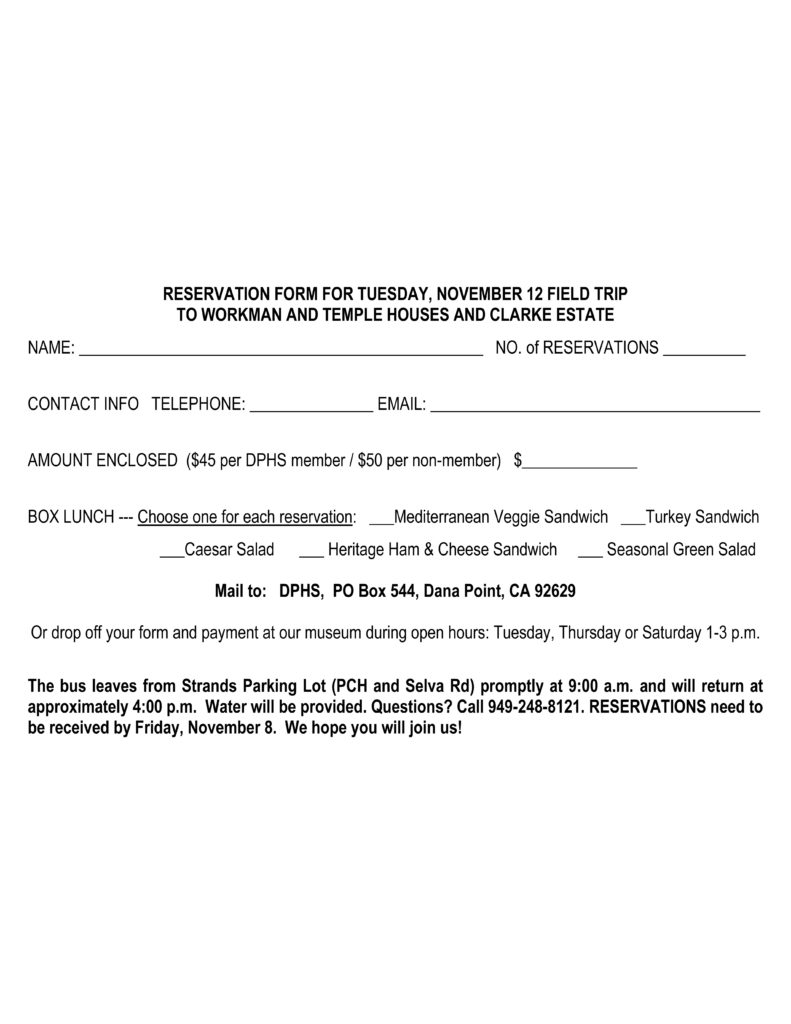This year’s excursion will be to the Workman and Temple Homestead Museum in City of Industry and to the Clarke Estate in Santa Fe Springs. The price includes motor-coach services, beverages and choice of boxed lunch on the Homestead Museum patio.
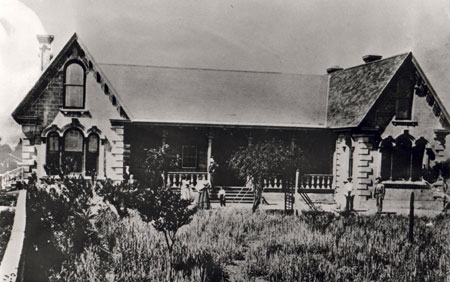
Come and explore a hidden treasure like no other in Los Angeles. Located in the heart of a former Mexican rancho, the Homestead Museum’s houses, cemetery and gardens are full of stories that will surprise you from start to finish. Located in the bustling City of Industry, the museum inspires visitors to become advocates for history as they explore what life was like in this region from the days of the Mexican ranchos to the Roaring Twenties. Aside from touring the houses, visitors can take self-guided tours of El Campo Santo, the family’s private cemetery founded in the 1850s. The Walter P. Temple Memorial Mausoleum, completed circa 1920, contains many Workman and Temple family members, along with Pío Pico, the last governor of Mexican California and a friend of the Workman family.
The history of the site begins with William and Nicolasa Workman, who immigrated to the area from Taos, New Mexico, in 1841, while this land was still part of Mexico. The Workman House survives as a unique testament to the changing architectural styles and domestic tastes of the 19th century.
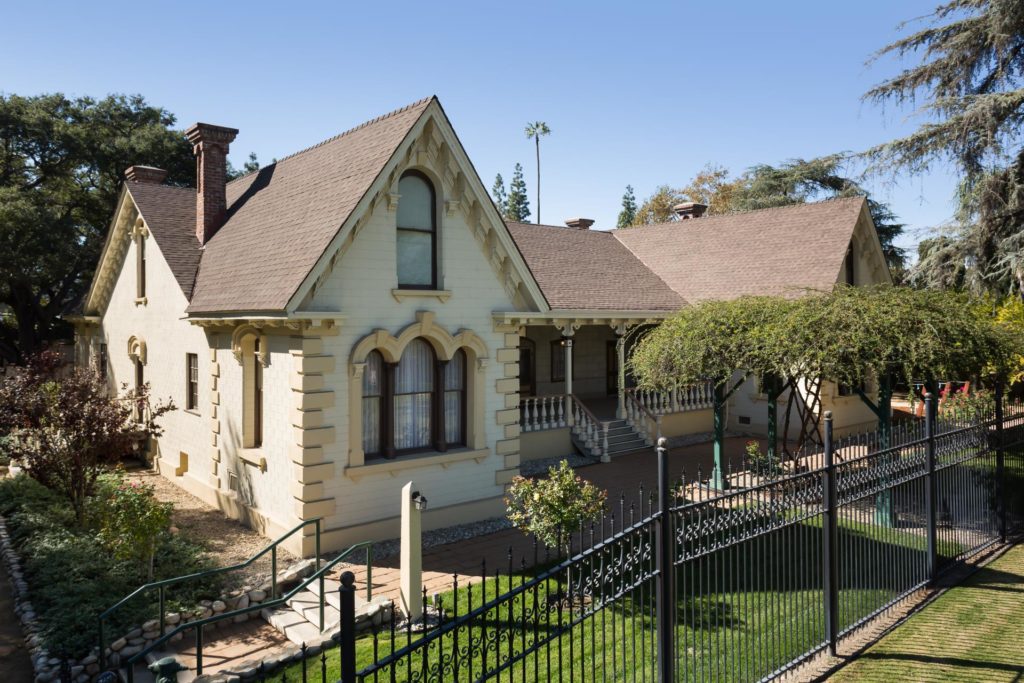
It originally stood as a simple three-room adobe, built shortly after the Workman family’s arrival in November 1841. With the success of their cattle ranch, they continued to remodel the house by adding rooms. By the 1870s (pictured left), new wealth from vineyards and wheat farming allowed them to completely transform the Mexican-era adobe into a modern American house, building a second floor and adding a variety of decorative details (color picture above, today.)
The fortunes of the Workman and Temple families, who were related through marriage, came and went over many decades, often losing their properties only to have later family members repurchase them.
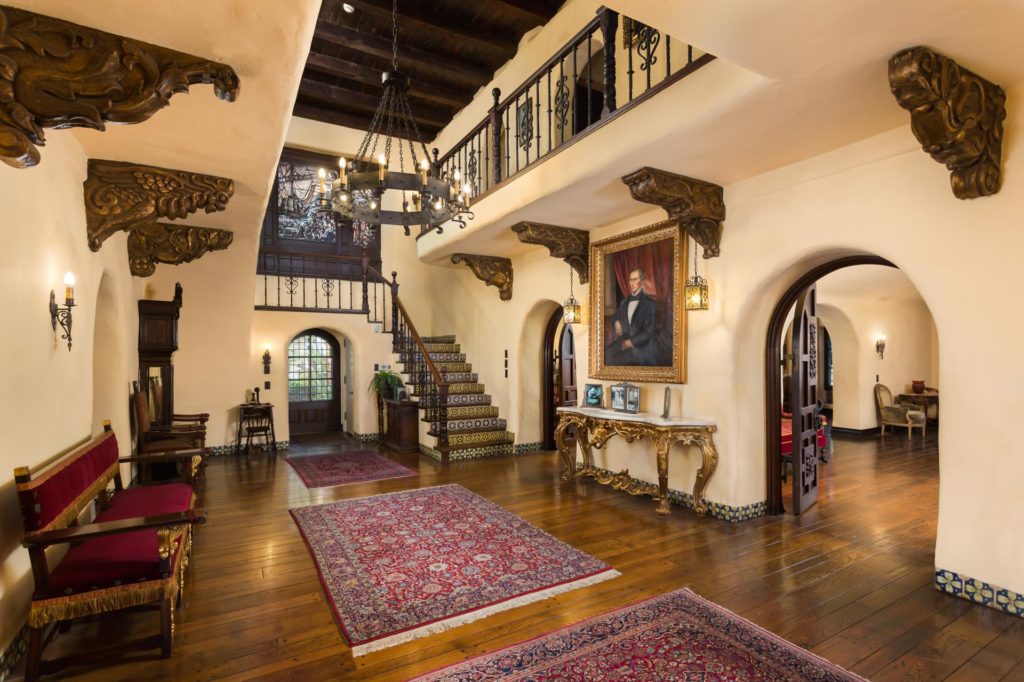
In 1917, Walter P. Temple and his wife Laura used their wealth from an oil discovery to repurchase 75 acres of the family’s original rancho. The Temples commissioned well-known Los Angeles architects to design La Casa Nueva (interior, pictured above), or “The New House.” Built between 1922 and 1927, this 12,400-square-foot Spanish Colonial Revival mansion is noted for its fine architectural crafts, including stained glass, ceramic tile, wrought iron, and carved plaster and wood.
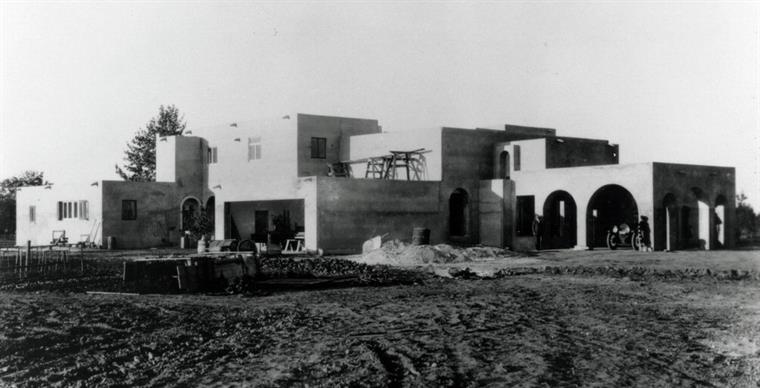
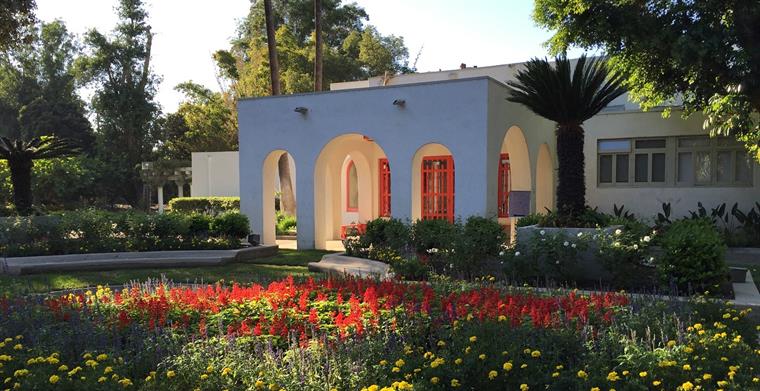
Our second stop on our excursion will be in Rancho Santa Fe. The Clarke Estate (b&w pictured above, under construction c1920) was built as the home of Chauncey and Marie Rankin Clarke in 1919. A wealthy, socially prominent couple, they hired architect Irving Gill to build their country home on 60 acres of citrus groves in Santa Fe Springs. Gill built this elegant house in an unusual style for the era. Using the feeling of Mediterranean and Mission Revival architecture, he designed this house without ornamentation. In describing his design philosophy, he wrote that architects “must have the courage to fling aside every device that distracts the eye from structural beauty.” As a result of his philosophy, he became one of the most influential architects of this century. Completed in 1921, the 8,000 square-foot home is constructed of poured reinforced concrete (color photo pictured above, today).
RIGHT CLICK ANYWHERE ON THE RESERVATION FORM BELOW TO SAVE AND THEN PRINT FROM YOUR COMPUTER. YOU CAN ALSO GO HERE: TO PRINT THE FORM IMMEDIATELY: /wp-content/uploads/2019/10/NOV-RES-FORM-PDF.pdf
